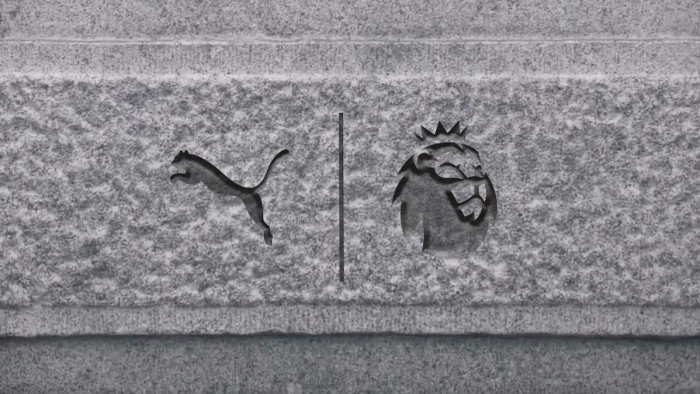Why we will always love Roger Federer more than the underdog
He's the greatest ever, and yet we still want him to keep winning


Wimbledon isn’t like other sporting events. Fans find themselves queuing overnight for tickets without even knowing which players they will see the following day. Even if they have a rough idea of the main-eventer, those heading to SW19 in the first week will take in a least a couple of games where they haven’t decided their allegiances the two players step out onto the court, perhaps even later than that.
Such a scenario brings with it a tendency for casual fans to side with either a) the underdog b) the British hope, or c) both. The tired ‘Come on Tim’ cheers have gradually been replaced with shouts of support for lesser players, hoping for an upset: Ivo Karlovic knocking out the reigning champion and top seed Lleyton Hewitt in the first round in 2003, the-then 102 seed Dustin Brown’s exhilarating victory over Rafael Nadal two years ago. You’d feel thrilled just to watch one of the top seeds in the flesh, even if they smashed their opponent into the ground, but you’d always remember - and secretly hope you’ll be there to witness - their humbling.
But there is one major exception to this rule: Roger Federer. Arguably the greatest male player of all time, and yet nobody ever wants to see him lose.

Federer has made history this year, becoming the first player this century to win the Wimbledon Men’s Singles title without dropping a set. Indeed he lost only 74 games in his seven matches in the tournament (even if one of these matches came early with the withdrawal of first-round opponent Alexander Dolgopolov.)
He met the Croat Marin Cilic in the final. In normal circumstances, the meeting of an unflappable multiple winner and a perennial nearly-man would firmly divide opinion.
Cilic had finally made it to his first Wimbledon final at the age of 28, having been eliminated at the quarter-final stage in each of the previous three years, and while his one major title had come after a win against his Swiss rival in the semi-finals at Flushing Meadows, that run of Wimbledon almosts included a heartbreaking five-set defeat to Federer in 2016. Federer was expected to win, and many expected him to win in straight sets.
And yet, at least for the first set, few were cheering for the Croat. It was only when Cilic was visibly struggling that the noise for him even came close to the volume of the cheers for Federer. Cynics would argue that the approach came from the fact that they knew a Federer win was inevitable but wanted their entertainment prolonged. It was less clamour for the underdog to prevail and more clamour for him to endure. So, why does Federer buck the trend?

Part of it could come down to some recognition from those watching the record-breaker that they might be doing so for the last time. Indeed, this is a feeling some at SW19 may have had before this year, not least during his barren run of 2013 when he failed to reach a grand slam final for the first time in more than a decade. After watching Pete Sampras step away from the game at 31, almost without warning, plenty of fans (casual or otherwise) have recognised the need to fully appreciate what they have before it is gone.
Many are now at peace with the idea that, while it may not seem so at times, Federer is mortal and his time in the game will eventually come to an end. This is what made his Australian Open run in January so special, particularly the fact that he met Rafa Nadal - his old sparring partner and another player who has at times seen close to retirement after an illustrious career - in the final. It was a final match-up that had almost de rigueur during the pair’s golden era, and if it were to be their last Grand Slam final, it seemed a lovely sign-off; the two players still able to produce magic almost a decade later.
This ties into people’s expectations for the future of tennis. Federer’s contemporaries - Nadal, Andy Murray and Novak Djokovic - have all long adopted a style of play more punishing on the body, leaving them more at risk of early retirement, which would be fine if there was an obvious heir to the ‘big four’ in the coming years.
Instead, however, few have positioned themselves as the next dominant power, with this prompting suffocating pressure on the likes of Nick Kyrgios, Dominic Thiem and Sascha Zverev, talented players not ready to make that final step up as early as the likes of Djokovic and Nadal, in an attempt to uncover the ‘next big thing’.
The next generation is expected to continue along the same path that saw all eight of 2015 and 2016’s grand slams, plus the most recent Olympic gold medal, shared between Djokovic, Murray and Wawrinka.
The dominance of the ‘big four’ has left a generation of players now in their mid-late twenties without the experience of major finals. In willing on Federer, there is a sense of cheering against time itself, prolonging the handover period before a post-Roger era of tennis can truly kick on. Perhaps it’s because, when the Swiss finally retires, the tennis landscape will be fundamentally less exciting, less mesmerising, less special, and we aren’t ready for that yet.

Then, of course, there is the interlocking matter of Federer’s style. More than a decade has passed since David Foster Wallace wrote effusively of ‘Federer moments’ – stupefying moments of sublime skill and surprise that seem staggeringly implausible if not impossible - but anticipated that power-baseline tennis would come to dominate the game. By and large his predictions have been borne out. However even Wallace, who sadly died in 2008, surely cannot have anticipated the player he called “the best tennis player currently alive” to even be in the conversation for such an honour nearly 11 years on.
The failure of some fans to warm to dominant figures in other sports can often come down to questions over their life away from their profession. For all the dominance of the likes of Tiger Woods, Floyd Mayweather and Lionel Messi in their chosen professions, their second life has consistently been considered uninspiring or worse. Federer, however, has managed to escape similar critiques despite few pointing to his private life as more than a barely-present add-on to what makes him so popular.
Considering what has happened to other stars elevated to a similar standing, some have almost been waiting for a chink in the armour to appear and for everything to come crashing down. However, without any of this materialising, there is an argument that by ensuring his family life remains a blank slate - fans know and recognise Mirka and the two sets of twins, but there is often little attention beyond surface level - our consumption of the Federer identity comes through his tennis and his tennis alone.
Some people play tennis. Roger Federer waltzes. Freeze-frame any of his peers, you will see bulging muscles, popped veins, faces contorted in anguished expressions somewhere between intense concentration and extreme pain, their shirts and shorts soaked through from sweat and toil. Do the same with Federer and you have an image to blow up and put on any wall. Just by walking to the net, in his immaculate tennis whites and coiffed hair dangling over his headband just-so, Federer could elevate the most amateur snapper’s pixellated action shot to the level of an extremely accomplished sports photographer.
Watching Federer now can feel like a bonus. A treat we never expected to enjoy, having watched his decline threaten to outlast his peak. And that is what, arguably, makes his enduring success so easy to cheer for.
In an era where individual points are broken down so microscopically, to the point where you can almost see a player’s thought processes play out frame-by-frame, Federer is at once a relic and a breath of fresh air. His air of surprise, and a range of movements which seem balletic even when deliberate at heart, have the power to ask you why no one else is doing the same thing while simultaneously telling you why such a feat would be impossible. Alejandro Davidovich Fokina, who won the boys’ singles title at Wimbledon this year, has spoken of Federer providing his inspiration to take up tennis but his allegiances moving towards Djokovic as he got older. Even the youngsters who adore him seem to realise a necessity to move towards a more ‘effective’ style. You can’t train to become the next Roger Federer. You have to be him in the first place.
There are few sporting figures capable of achieving repeated greatness without making some changes to their game. Cristiano Ronaldo reinvented himself from tricky winger to clinical number nine and Muhammad Ali leaned more towards alternative approaches the older and less energetic he got. Sometimes the opposition to a dominant athlete can come from inertia, rather than any quality which ought to bring opposition on its own, but Federer has managed to buck the trend.

That’s not to say he hasn’t changed anything - he has certainly been more selective in his overall routine as he realises the limitation of his body - but by-and-large the things that made him so popular in his mid-twenties have remained a major part of his game.
There is only so long a tennis player can continue with their approach when everything else is changing around him, but they ought to be able to sustain a game rooted in power at the top level more easily than one that relies on endless creativity and invention. If the art of seeing things that others cannot is possible for a twentysomething, logic dictates that years of resistance and repeated exposure to the same opponents makes it exponentially harder to carry on down that same route. How can Federer keep producing Wallace’s ‘Federer Moments’ when, in theory, over the years, every opponent has seen and studied all your surprises? And yet he still keeps producing them.
Federer’s ability to not only retain the element of surprise, but to involve new levels of improvisation into his game, is not just beautiful to watch (and it is beautiful, tennis that seems almost choreographed in its elegance, style and ingenuity) but intractable with our perceptions of what should be possible on a tennis court.
By rights, the rising trend of clinical baseliners ought to have rendered such graceful play a fanciful coda to the modern game, rather than something which could still prove the superior approach for winning major titles.
It feels as though there is still room for a player to emulate the Swiss’ style and still reach the top. But it increasingly feels like there is only really room for one such player. One of the most surprising things about Federer is that the role still belongs to him, the man who made the role his own in what feels like an entirely different era of the game.
In a way, while Federer’s dismissal of Cilic - and it is a dismissal, rather than a ‘demolition’ or ‘destruction’ (the language of force isn’t appropriate when describing a Federer victory) - marks out a very different David-vs-Goliath situation. One where Federer’s stylish tennis-with-a-flourish game is the underdog amid a wider tennis narrative of big serves and dominant baseline play, even on grass.
Wimbledon spectators haven’t changed their tune from backing the underdog. Sometimes that underdog is expansive style against mechanical consistency. Sometimes its agelessness against the inevitable passage of time.
Latest
Related Reviews and Shortlists









